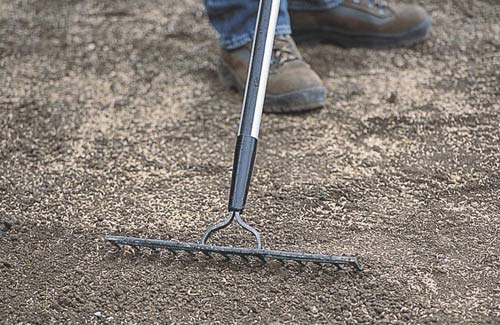Over time, every lawn is subject to change, namely the soil is compacted and begins to pass air is bad. Thus, there is difficulty Incoming mineral substances and air to the root system and light at the lower part of the plants. As a result, worsen the aesthetic parameters of the grass cover.
Content
In addition to the regular application vertikulyatora which promotes softening of the upper layer of earth and normal aeration, periodic use of fertilizer for the lawn. Proper selection of them, not only improves the quality of herbs, but also prevents the development of pests and many diseases.
Knowing the many features of the grass sward, already in appearance can be determined what exactly substances for food lacks.
What are lawn fertilizers
Because some green cover remains without plowing, for many years, along with dressing fertilizers need to produce food lawns organic fertilizers, namely decomposed peat, small horse manure, compost, humus, etc.
Complex fertilizer for the lawn helps:
- improve its color;
- actively resist drought, weeds and pests;
- make thicker grass.
A certain amount of fertilizers must be made regularly, since the one-time distribution of too much dose may affect plants negatively.
Fertilizers for lawns
In addition to the main feeding, which is made before sowing the lawn, the systematic surface fertilizer should be produced.
For powering lawns, specialists are recommended to use exclusively those fertilizers and components, the composition of which is suitable, taking into account the individual characteristics of herbs. At the same time, they are required to provide green cover with all the necessary micro and macroelements.
For example, phosphorus strengthens the root system, nitrogen improves grass color, and potassium increases its resistance to drought and disease.
It is also necessary to know that there are such fertilizers for the lawn, which are made mainly in the spring, summer or autumn.
Frequency Fertilizer
Wood ashes should be used as feeding from 300-1000 kg / ha. It is phosphorus-potash fertilizer and podzolic acidic soils can neutralize acidity. Lime can be used in the form of superficial fertilizer. However, it gives the best results when combined with a peat with an acidic reaction. As for the norms of its introduction, they should be established depending on the lime fertilizer and the acidity of the soil.
As for the soil fertilizer by manure, then such a nutrition must be created early in spring and immediately after the second zip (10-12 g / ha). The most valuable is considered good decomposed cow and horse manure. You can also use blood flour (200 -400 kg / ha), bone flour (300-700 kg / hectares) and bird litter (300-500 kg / ha).
How to distribute fertilizers
Organic and mineral fertilizers are made using hand robles or harrows. In order to avoid burns of stalks and leaves, scatter the second in the surface of the soil on wet grass is not recommended.
The same lawns, which consist of a low winter resistance of herbage, after the last mowing can be evenly sprinkled with a well-overwhelmed with a humor or peat. This will contribute to his insulation and at the same time to be excellent fertilizer.
To make a fertilizer of the lawn in the spring, initially clean it from leaves and debris, as well as to play the soil with rakes or harrow. At the same time, you can put the grass, make feeding and close the depressions.
Choosing a fertilizer type
When choosing fertilizers, as well as determining the deadlines and norms of feeding, it is necessary to take into account the following features:
- all plants are important to provide nutrients in the 1st year of life, which will determine their condition in the future;
- in the spring, at the beginning of the vegetation, the Earth is still a bad fundamental, besides, there is a lack of air and there is a weakened activity of microorganisms. That is why there is a lack of nitrogen consumed;
- grass Perennial Herbs in the 1st year of life very need nitrogen and actively consume phosphorus. At the same time, the need for potassium in different types of types has a different period of time;
- at the end of the vegetation, potassium and phosphorus acquire great importance;
- after mowing, the grass increases its need for many nutrients, especially nitrogen and potassium;
- as for the following years, a certain pattern of plant nutrition is preserved here.
Caring for lawn
1. In the summer, it is created by irrigating lawn, regular weeds, making grass, her cleaning, making organic and mineral fertilizers.
2. In the fall from the lawn, fallen foliage is removed. Then the latter is placed in a compost burta width of 2 m and a height of 1.5-1.7 m. Here it should be in loose and wet state. For this, the manure and other organic are easily defined remnants. After 1.5-2 years, an excellent leaf land is formed in such barts.
3. Winter herbal lawn should be protected from pulling out.
Surface fertilizer of lawn video:





























